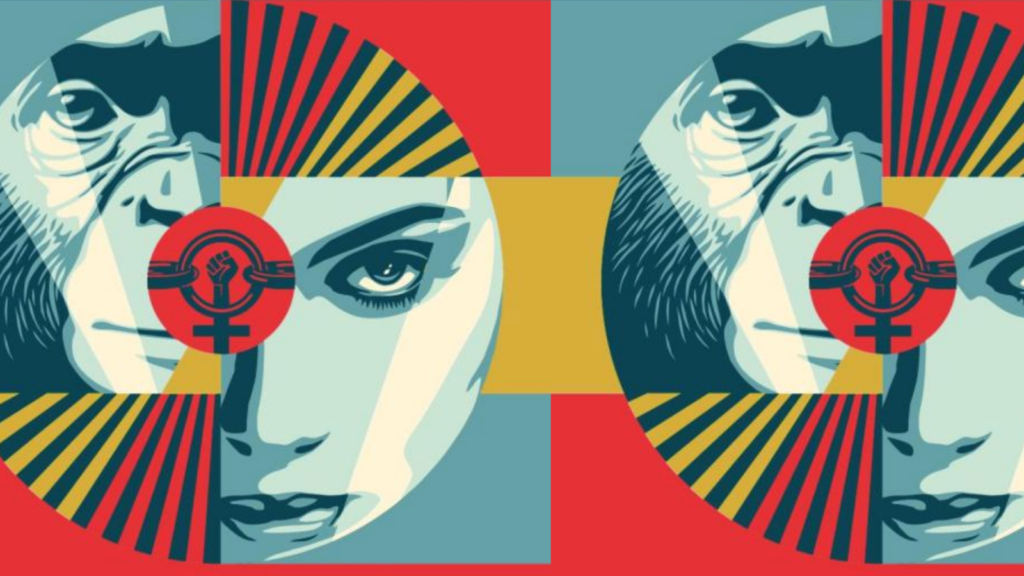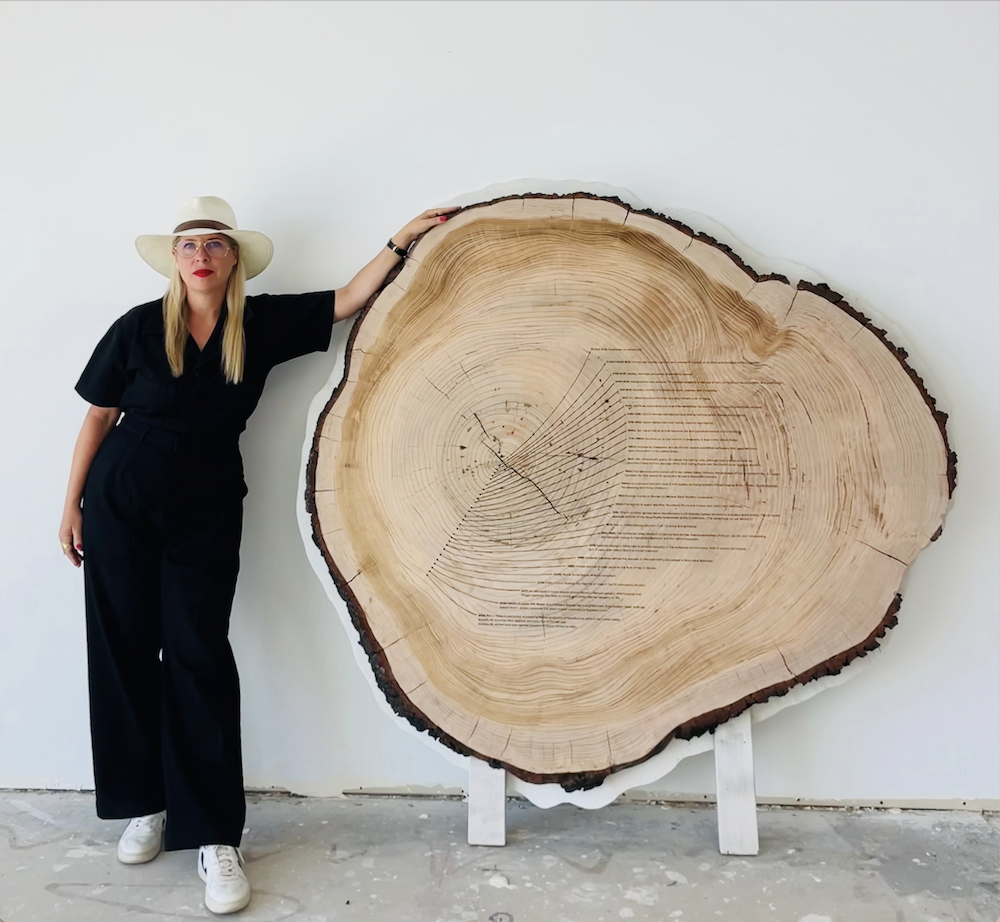In the bonobos, Diane Rosenfeld finds proof positive that “patriarchy is not inevitable.”

The first time I heard about the bonobo—an endangered great ape species living exclusively in the Democratic Republic of the Congo (DRC)—was 20 years ago during a class at the Harvard Kennedy School taught by Ambassador Swanee Hunt. The class explored inclusive security focusing on the important and unique role that women can play in governance, particularly regarding peacemaking initiatives.
Hunt was highlighting the way that female bonobos mediate conflict—by rubbing their genitalia together—and their relatively peaceful existence. The course centered on the women around the world who were building what Diane Rosenfeld might call, years later, the “Bonobo Sisterhood.”
Around this same time, Rosenfeld was on the verge of learning about the bonobo herself. In 2004, on a panel with Harvard anthropologist Richard Wrangham, the ah-ha moment came. Wrangham highlighted the ways that most primates use sexual coercion to control females and reproductive resources (including humans). But he also spoke about the unique ways that bonobos contradict our assumption that male violence is “natural.” Right then and there, the seeds were planted for what would become the Bonobo Sisterhood, which, for Rosenfeld, is a call to action, a way forward and societal shift that can free us from the grips of patriarchy—which she outlines in her new book, The Bonobo Sisterhood: Revolution Through Female Alliance.
Rosenfeld does not reference the distinctive conflict mediation techniques of the bonobo, but rather points to their egalitarian social structure as one that humans should emulate.
“The bonobos are peaceful, loving, food sharing, freely sexual and xenophilic, meaning they love strangers, they do not fear them,” because “they have nothing to fear,” she writes. In the bonobos, Rosenfeld finds proof positive that “patriarchy is not inevitable.”
Bonobos contradict our assumption that male violence is ‘natural.’
In the foreword, Ashely Judd, who first spent time with the bonobos in the DRC in 2008 while healing from sexual trauma herself, notes bonobos “share 98.7 percent of our DNA” and live free of male sexual violence. She highlights how bonobos connect and support one another outside the bounds of kinship ties. Judd praises Rosenfeld’s assertion that the bonobos can show humans a new way forward and calls the book “a fiercely intelligent analysis of patriarchy and sexual violence.”
The book outlines very clearly, through data, legal cases and historical perspective, the depth and breadth of patriarchy and sexual violence against women, and in the introduction, Rosenfeld asks an essential question: “How do we promote equality among and between women?” Instrumental to Rosenfeld’s answer to this question is her assertion that we must “take a hard look at how living under a constant cloud of patriarchal violence affects women’s lives every day.”
Part One of the book, titled “The Problem,” does exactly this, as she provides readers with a clear picture of this “constant cloud.” That picture includes damning data, heartbreaking court cases—in which women suffer extreme violence with no justice—and a myriad of stories that underscore the everyday danger of walking through a parking lot, going for a jog, being alone with a man, and simply living and working in spaces dominated by men.
She offers up clear and irrefutable evidence that our current societal norms do very little—if anything—to counter the realities of intimate partner violence, which range from domestic violence resulting in death to date rape to “compliance sex” (a new term for me ), which speaks to the difference between consensual sex and wanted sex, when all sexual experiences exist within a patriarchal culture.
Rosenfeld brings to the work an impressive legal career and decades of experience regarding gender violence, and the book offers important and strong terminology as it frames the oppression of patriarchy for women across the world and, in particular, in the U.S., where the Violence Against Women Act consistently fails to protect women because the law is, by and large, written, interpreted and enforced by men.
Despite all of this, I found myself questioning the underlying assumption that laying out the current system’s failures and the pervasiveness of this “constant cloud” is enough to convince the majority of white women to build a sisterhood with women of color when that sisterhood requires that they relinquish their white privilege.
In Part Two of the book, “The Pivot,” she outlines the required shift toward “Bonobo Sisterhood” or “Female Alliance.” (She does not recognize calling it a “female alliance”—as the subtitle of the book does—is exclusionary to many woman and nonbinary individuals who suffer at the hands of patriarchy.) This pivot posits that outlining how grim the reality is for women on the whole will motivate white women to give up their privilege and finally recognize that “all women are created equal”—a central tenet in Part Three of the book, “The Promise,” which includes her declaration of unified independence from patriarchal violence.
The book offers a solution I’d love to see: women coming together to build a true sisterhood with equality among and between all women. But this solution requires that we also effectively address other systems of oppression, such as racism, classism and homophobia.
Rosenfeld understands this: “Racism and sexism go hand in hand,” she writes. “Each is based on white male supremacy and reflects a foundation in law authored by and judged over by, overwhelmingly, white men. White supremacist patriarchy places white men above everyone else.” She also knows “the Bonobo Alliance will work only if white women get on board.”
“White Bonobo sisters have unique work to do,” she writes. “White women have to identify, confront and question our role in perpetuating white supremacy in patriarchy.” But she fails to put forth the tools necessary for such a confrontation. Nor does she offer much in terms of a guide map for white women to use to convince their peers—who may have distinctly different political views from the white woman reading the book—to do this important internal work. Self-defense classes and consciousness raising are not enough. Anti-racist educators offer the tools that are needed for the “unique work” white women must do.
Rosenfeld also consistently demonstrates that law enforcement fails to protect women, featuring stories of women shot by their domestic abusers in the presence of police officers or shot because officers did not enforce restraining orders. Yet as I read, I kept seeing opportunities to reference the significant work of abolitionists, which could also support the creation of the Bonobo Sisterhood. Such an inclusion would strengthen the feasibility of the creation of a such a sisterhood. Absent them, the book pointed to the door I needed to open without giving me all of the keys I needed to unlock it. The work of ending patriarchy and building a Bonobo Sisterhood is also the work of ending white supremacy.
Rosenfeld reminds women within patriarchy, “If one is at risk, then we are all at risk,” but what if that “risk” is deemed acceptable to some given the comfort and privileges that whiteness affords them? If this is the case, Rosenfeld’s essential question: “How do we promote equality among and between women?” remains unanswered.
U.S. democracy is at a dangerous inflection point—from the demise of abortion rights, to a lack of pay equity and parental leave, to skyrocketing maternal mortality, and attacks on trans health. Left unchecked, these crises will lead to wider gaps in political participation and representation. For 50 years, Ms. has been forging feminist journalism—reporting, rebelling and truth-telling from the front-lines, championing the Equal Rights Amendment, and centering the stories of those most impacted. With all that’s at stake for equality, we are redoubling our commitment for the next 50 years. In turn, we need your help, Support Ms. today with a donation—any amount that is meaningful to you. For as little as $5 each month, you’ll receive the print magazine along with our e-newsletters, action alerts, and invitations to Ms. Studios events and podcasts. We are grateful for your loyalty and ferocity.
Up next:





